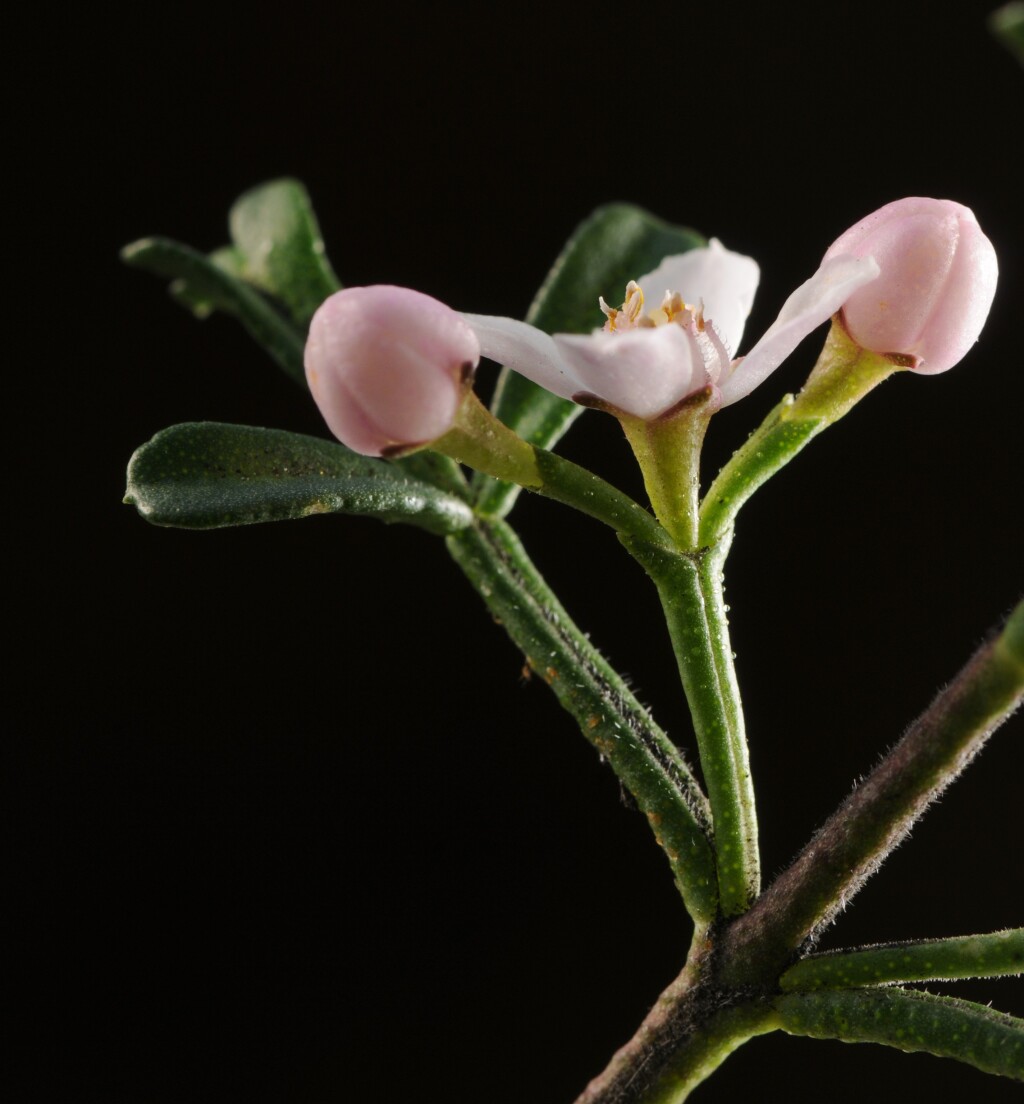Cyanothamnus
Lindl.Herbs or shrubs. Leaves opposite, simple, or imparipinnate or bipinnate (not in Victoria). Inflorescence axillary or rarely terminal on long shoots, cymose or flowers solitary. Flowers bisexual; sepals 4, free; petals 4, free, imbricate, usually pink or white, sometimes blue, tip with small but distinct incurved hook; stamens 8, all fertile, erect, anther connective usually prominent and dark-coloured; disc entire, not swollen; carpels virtually free, lacking sterile apex, styles terminal on ovary. Fruit of 1–4 follicles; follicles not transversely ridged, with rounded apices, seeds released explosively with elastic endocarp; seeds c. elliptic, rugose to minutely verrucose, dull, black or grey or rarely brown, dorsal side sometimes flattened.
23 species, across all of Australia except for the Northern Territory, all endemic.
While there are few discrete morphological characters to distinguish this genus from Boronia, molecular data shows that it is more closely related to Acronychia than to Boronia and it is therefore recognised as a distinct genus.
 Spinning
SpinningDuretto, M.F. (2003). Notes on Boronia (Rutaceae) in eastern and northern Australia. Muelleria 17: 19–135.
Duretto, M.F.; Heslewood, M.M.; Bayly, M.J. (2020). Boronia (Rutaceae) is polyphyletic: Reinstating Cyanothamnus and the problems associated with inappropriately defined outgroups. Taxon 69: 481–499.
Duretto, M.F.; Wilson, P.G.; Ladiges, P.Y. (2020). Boronia. Flora of Australia.
Niesh, P.G.; Duretto, M.F. (2000). The taxonomy of Boronia anemonifolia and B. rigens (Boronia sect. Cyanothamnus, Rutaceae). *Muelleria * 14: 3–16.

